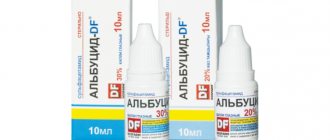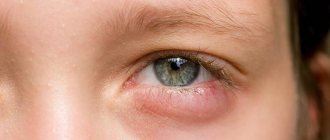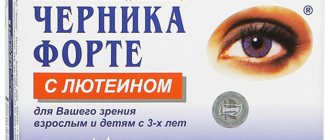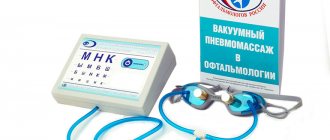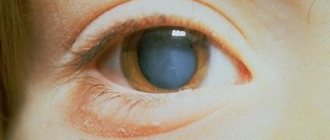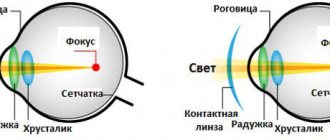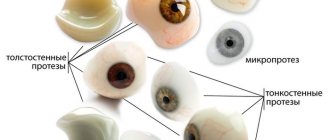Infectious eye lesions are very common in people of all ages. Their sensitive mucous membrane is always at risk of developing pathogenic bacteria in it. The reasons for their development are very different. In newborns, this is an insufficiently developed immune system; in adults, it is non-compliance with personal hygiene rules, working in a draft, the consequences of other infectious diseases in various locations, especially in the upper respiratory tract.
Most often, treatment of these diseases is based on the use of bactericidal drugs based on antibiotics in the form of eye drops.
Recently, two popular eye drops are Tobrex and Signicef. They are both actively advertised and people's opinions about them are mostly positive. But which drug is better? This question plagues many people who have encountered an infection localized to the eyes. This question can be answered only after a comparative analysis of these two means.
Fluoroquinolone signicef
levofloxacin as an active ingredient , a second-generation fluoroquinolone antibiotic. It has a wide spectrum of effects on many types of bacteria. Its action is based on suppressing the proliferation of bacteria at the cellular level, thus exhibiting a bactericidal effect. In the form of drops (at a concentration of 0.5%) it is widely used in the treatment of the following eye diseases:
- Conjunctivitis.
- Keratitis.
- Blepharitis.
- Barley.
- Eak prophylactic agent after microsurgical operations on the eyes.
The drug is very effective, with virtually no side effects when used externally. However, signicef is contraindicated in children under 1 year of age . It is also not used in pregnant and lactating women due to the possible negative impact on the unformed body of a newborn child.
Video
Did you know this?
| Local | System |
|
|
Aminoglycoside Tobrex
Tobrex has been used in ophthalmic practice for quite some time. Tobramycin , the main active ingredient, is a representative of aminoglycoside antibiotics, and of this entire group it has the smallest range of side effects.
The drug is available in the form of eye drops and eye ointment containing 0.3% tobramycin. It is also used for all infectious eye diseases, but in this case, if the pathogen is sensitive to tobramycin.
Tobrex is contraindicated for use in newborns under 1 year of age, despite the fact that some pediatricians prescribe it at this age. But the possibility of accidental overdose and the high chances of developing paralysis of the respiratory muscles and hearing disorders in children of this group cast doubt on these prescriptions.
Indications for use
Tobrex and Tobriss eye drops are used to treat eye diseases caused by bacterial microorganisms. The effectiveness of treatment depends on the depth of penetration of the infection (tobramycin works on the anterior segment of the eyeball) and the type of causative bacteria.
Local application of the main active ingredient is effective only against bacterial microorganisms localized on the surface of the eyelids and eyeball.
Drops are prescribed for primary infections and for the treatment of post-traumatic inflammation.
The following indications for the use of antibacterial drops are distinguished:
- blepharitis (chronic inflammation of the edge of the eyelids);
- blepharoconjunctivitis (inflammation of the edge of the eyelids and connective tissue membrane);
- conjunctivitis caused by a number of provoking pathogens;
- keratitis (ulceration and hyperemia of the cornea);
- keratoconjunctivitis (a complex manifestation of inflammation of the conjunctiva and cornea);
- dacryocystitis (infectious process in the lacrimal ducts and lacrimal sac);
- uveitis (inflammatory process of the choroid of the eye);
- postoperative period after cataract removal;
- recovery after mechanical damage to the outer part of the eye.
Third generation aminoglycosides are practically unable to penetrate the stratum corneum, so treatment of deeply localized infections with drops is impractical.
Features of treatment with aminoglycosides
The use of antibiotics belonging to the aminoglycoside group requires compliance with several rules. These include the following restrictions and recommendations:
- tobramycin should not be used in conjunction with glucocorticosteroid ointments to avoid leveling the symptoms of infection;
- simultaneous administration of two different aminoglycosides enhances nephro and ototoxic effects;
- Long-term use of Tobrissa or Tobrex can cause the development of superinfection against the background of emerging resistance.
In rare cases (less than 1%), local use of drops leads to a complication of the patient's current status, with chemosis, crystal deposition on the cornea and ulceration of mucous tissues.
Known side effects of aminoglycosides are nephrotoxicity and ototoxicity.
Such complications occur more often in infants and the elderly. Children are more susceptible to cochlear toxicity - aminoglycoside damages the nerve fibers of the hearing aid and leads to the development of sensorineural hearing loss, which is characterized by irreversible hearing loss and possible complete loss of auditory perception (deafness).
Nephrotoxicity and vestibular disorders are more common in older people who have age-related changes in renal tissue and labyrinthine disorders (vestibular disorders).
How are these drops similar?
If we consider the similarity of Tobrex and Signicef drops, we can highlight the following points:
- Both drugs are analogues and have the same mechanism of action.
- Each drug is presented in the form of eye drops.
- Quickly relieve inflammation and destroy infection.
- Can be used at any age, starting from 1 year.
- Not for use in pregnant women and breastfeeding women.
- Minimal risks of side effects.
- The same volume of the tube with drops is 5 ml.
- The pricing policy for both drugs is approximately the same.
Price
Average price in Russia
In pharmacies located in the Russian Federation, the average cost of the drug described above is 200 rubles.
Average cost in Ukraine
In Ukrainian pharmacies, these eye drops can be bought for about 90 hryvnia.
Eye problems cannot be ignored. The following information can save your eyesight:
- Black dot before the eyes: what is it?
- The eyes of an adult are festering
- How to instill drops correctly?
Distinctive characteristics of tobrex and signicef
Comparing both drugs in terms of distinctive characteristics, the following should be noted:
- Both drugs belong to antibiotics, but their active ingredients belong to different pharmacological subgroups. This should be taken into account when replacing one drug with another, in case of proven possibility of individual intolerance to tobramycin or levofloxacin.
- The instructions for Tobrex indicate a wider list of diseases for which it is used (for example, iridocyclitis and dacryocystitis). Signicef's indications are a little more limited.
- The dosage of Tobrex in the first days of treatment is 1-2 drops every 4 hours, and Signicefa - 1-2 drops every 2 hours. Thus, it can be assumed that the first drug will be used more economically during therapy.
- Unlike signicef, Tobrex is also available in the form of an eye ointment , which allows it to be used for long-term procedures, for example, in severe conditions, to apply ointment behind the eyelid at night.
Comparison of addiction between Signicef and Sulfacyl-sodium
Like safety, addiction also involves many factors that must be considered when evaluating a drug.
Thus, the totality of the values of such parameters as “o syndrome” in Signicef is less than the similar values in Sulfacyl-sodium. Withdrawal syndrome is a pathological condition that occurs after the cessation of intake of addictive or dependent substances into the body. And resistance is understood as initial immunity to a drug; in this it differs from addiction, when immunity to a drug develops over a certain period of time. The presence of resistance can only be stated if an attempt has been made to increase the dose of the drug to the maximum possible.
Which is better to choose?
Whatever choice you make, it will be correct, since both drugs are effective means for combating inflammatory processes in the eye area. Only certain moments can force you to take a deliberate step towards one name or another. So, in what cases should you give preference to Tobrex:
- In case of confirmed ineffectiveness of treatment of an eye infectious disease with levofloxacin.
- In case of allergic reactions when using Signicef.
- For iridocyclitis and dacryocystitis.
- If prolonged therapy of complicated infections is necessary with additional use of eye ointment.
- While saving on budget, since Tobrex is used a little more economically during treatment.
Signicef eye drops can be made the drug of choice in the following cases:
- If there is no effect in the treatment of an infectious disease with antibiotics from the aminoglycoside group, in particular tobramycin.
- If there is a possibility of allergies or other adverse reactions to the administration of tobramycin.
In all other cases, the choice of treatment is up to you or your doctor. After all, both drugs are worthy of attention and can be used by you independently, especially if the disease is not chronic, does not affect large areas of the mucous membrane and does not pose a threat to vision. Moreover, in terms of price they are almost completely identical.
Medicine and healthComment
Side effects and contraindications
Side effects when using Signicef occur extremely rarely:
There is information that the use of Signicef also caused side effects such as nausea and vomiting, diarrhea, increased activity of liver transaminases, pain in the stomach, inflammation of the liver, anorexia, dysbiosis, rapid heartbeat and others.
Important! Kuspavit: instructions for use, reviews and analogues, prices in pharmacies
Contraindications
Signicef is not allowed to be used in the following cases:
- hypersensitivity to the constituent substances of this medicine;
- children under one year of age;
- epilepsy;
- period of pregnancy and breastfeeding;
- the presence of tendon lesions during previous quinolone therapy;
- use of soft contact lenses.


